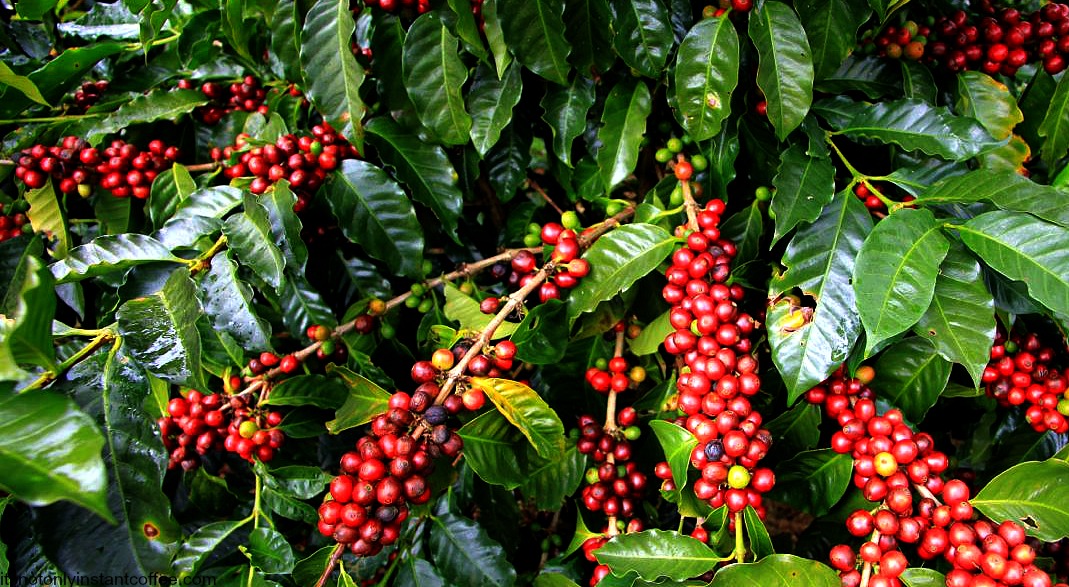[information] the global coffee market continues to be under pressure on the price estimate of coffee surplus for two years.

Professional coffee knowledge exchange more coffee bean information please follow the coffee workshop (Wechat official account cafe_style)
The International Coffee Organization (International Coffee Organization, ICO) said in its monthly report that the global coffee market is expected to show oversupply for the second year in a row in 2018, but the surplus is smaller than that of the previous year. The report expects the global coffee market to have a surplus of 2.29 million packets (60 kg each) this year, about 1 million packets less than the surplus of the previous year, of which global coffee production is estimated to be 167.47 million packets and consumption is estimated to be 165.18 million packets.
The report said a glut in the coffee market continued to put pressure on coffee prices, with the monthly average price of the ICO Composite Coffee Index falling from 109.59 cents per pound in November 2018 to 100.61 cents per pound in December 2018.
In November 2018, global coffee exports rose 5.7 per cent to 9.88 million bales from 9.35 million bales in the same period last year, but down 7.3 per cent from 10.67 million bales the previous month. In the first two months (October-November) of the current coffee year since October last year, exports of Arabica coffee increased by 13.2% to 13.84 million packets per year, and Robusta coffee exports increased by 18.1% to 7.1 million packets per year. Last year (2017 / 18), global coffee production increased from 1.5 million to 164.99 million bales.
This year, global Arabica coffee production is expected to increase by 2.5% to 104.01 million packets per year, while Robusta coffee production is expected to decrease by 0.1% to 63.5 million packets per year. Among the regions, coffee production in South America is expected to increase by 4.3 per cent to 79.94 million packets per year, coffee production in Africa is expected to increase by 1.8 per cent to 17.8 million packets per year, coffee production in Asia and Oceania is expected to decrease by 2.1 per cent to 48.01 million packets per year, and coffee production in Mexico and Central America is expected to decrease by 0.5 per cent to 21.72 million packets per year.
Brazil will remain the world's largest coffee producer. Brazilian coffee production is expected to be 58.5 million bales in 2019 from April, compared with the fact that the Brazilian Ministry of Agriculture has just raised its forecast for Brazilian coffee production in 2018 by 1.2 million to 61.7 million bales. Due to the difference in crop years between the northern and southern hemispheres, ICO's estimates of global coffee production in 2018 and 1920 include parts of Brazilian coffee in 2018 and 2019 respectively.
Between April and November 2018, Brazilian coffee exports rose 18 percent to 23.39 million bales a year, the highest level in the past decade, and in line with figures from the Brazilian Ministry of Agriculture to raise its coffee production forecast.
Coffee production in Vietnam, the second largest coffee producer, is expected to fall by 3.4 per cent to 29.5 million bales per year in 2018, mainly due to adverse weather damage per unit yield, but the expected increase in acreage offset some of the impact. In 2017, the output of coffee in Vietnam increased from 1.04 million to 30.54 million packets, while the export volume increased by 21.7% to 28.64 million packets. Vietnam's coffee exports increased by 32.7% to 4.1 million bales in the first two months of this year, partly due to the impact of accumulated inventory shipments in the previous year.
In 2018, Colombian coffee production is estimated to have increased by 2.7% to 14.2 million bales compared with 13.82 million bales in the previous year, mainly due to the decline in per unit yield caused by rainy weather last year. Colombian coffee exports rose slightly to 2.3 million bales in the first two months of the year, up from 2.28 million bales in the same period last year, with November's coffee exports rising 6.7 per cent to 1.24 million bales.
END
Important Notice :
前街咖啡 FrontStreet Coffee has moved to new addredd:
FrontStreet Coffee Address: 315,Donghua East Road,GuangZhou
Tel:020 38364473
- Prev

The hoarding festival came a few years ago! Popular Yemeni mocha candle awn flower butterfly discount!
Professional coffee knowledge exchange more coffee bean information please follow the coffee workshop (Wechat official account cafe_style) hoarding festival! Buy New year's goods ~ while the express delivery has not stopped, it is time to stock up some goods and go home for the Spring Festival. A box of ten packets of single variety 19.9 free delivery! Taobao password: $MN3pbJIg2Up, travel or go home during the holidays
- Next

The upgrading of consumption forces the upgrading of products and the transformation of instant coffee into high-end coffee is imperative.
Professional coffee knowledge exchange more coffee bean information please follow the coffee workshop (Wechat official account cafe_style) Information Times reporter Liu Fang as a product that has accompanied a generation of growth, the popularity of instant coffee has begun to decline. Recently, relevant data reports show that in China, the number of people who drink instant coffee is gradually decreasing, and the growth rate of its market is slowing down. Experts say that with the consumption market
Related
- Is espresso stored overnight in the refrigerator harmful to your body? Is frozen coffee better than freshly ground coffee?
- What parameters and proportions of water temperature should be used to grind and brew fresh coffee beans? Why can't I drink freshly roasted coffee right away?
- Customers have "changed" Manner's new products! Shop assistant: Please don't mess around!
- Remove sockets in customer areas at Starbucks stores?! Netizen: I won't go if I really tear it down
- What is the difference between the taste steps of sun-dried coffee and washed coffee? Why is sun-cured coffee sweeter and washed coffee sour?
- The recipe for salty grapefruit dirty is revealed! Coffee Festival salty grapefruit dirty coffee making materials parameters ratio milk share!
- How about the flavor of Sunlight 74158 at Sidamo Banshaha Mathieu Processing Factory in Ethiopia? 74158 Share the proportion of coffee brewing parameters!
- What effect does Italian American coffee with filter paper have? Will coffee taste better if it is put on filter paper at the bottom of the powder bowl?
- What is the color difference in coffee beans? What are the characteristics of honey processed coffee beans? Why are the anaerobically treated coffee beans uneven in color?
- How does novice Xiaobai quickly get started and make coffee? Newbies learn to make coffee by hand and share the specific steps and process process!

